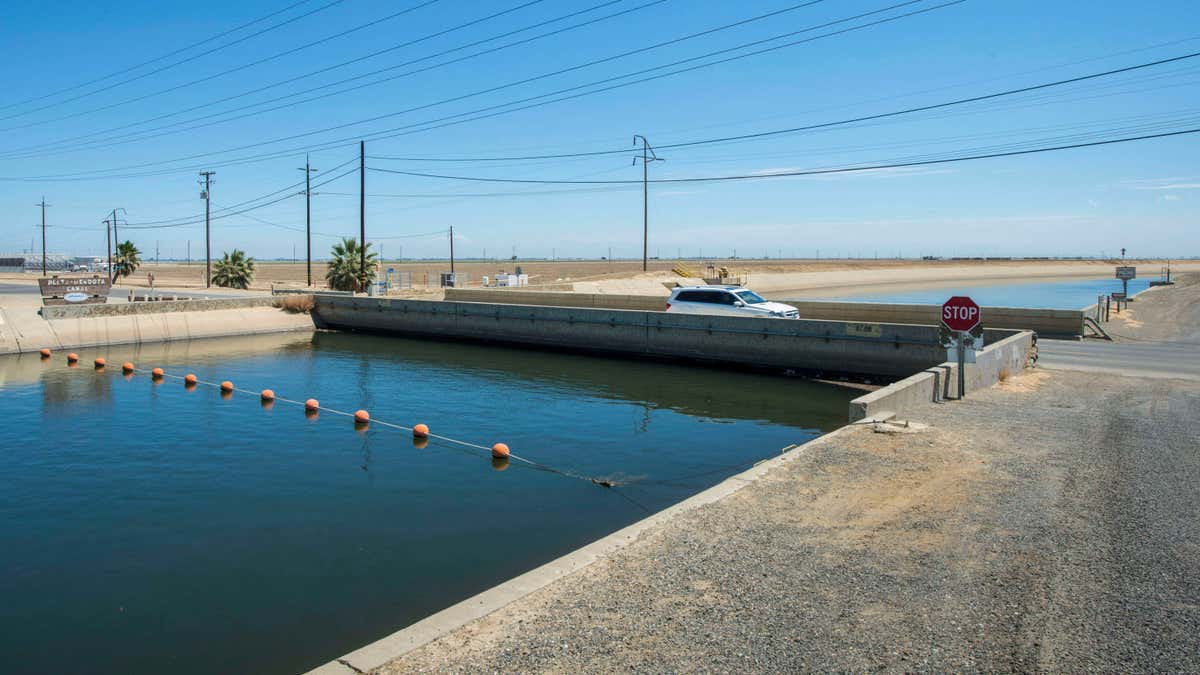
July 23, 2015: This photo provided by the California Department of Water Resources shows The Russell Avenue bridge, over the Delta Mendota Canal in Firebaugh, Calif. (AP)
Massive groundwater pumping in California’s Central Valley over the course of the state’s historic drought is causing vast areas of land to sink faster than in the past, officials said on Wednesday, citing new research from NASA scientists.
Data shows the ground is sinking nearly two inches per month in some places, putting roads, bridges and canals that deliver water throughout the state at growing risk of damage.
California has been plagued by sinking land for decades because of groundwater pumping during dry years. However, the new data shows its happening faster as the state endures its fourth year of drought conditions.
"We are pumping at historic levels," said Mark Cowin, head of the California Department of Water Resources. He added that groundwater levels are dropping to record lows — up to 100 feet below previously measurements.
Scientists at NASA's Jet Propulsion Laboratory did the research using images taken over time from satellites and airplanes.
California is the nation’s leading agricultural state, but drought has put 20 percent more land out of production this year than last.
Gov. Jerry Brown signed historic legislation last year that requires monitoring of groundwater pumping. However, local officials have until 2020 and in some cases until 2022 to devise their management plans, so it could take another decade or two before California has a handle on groundwater use.
“I don't think we can end overdraft or subsidence overnight," he said. "We do need to take action."
Meanwhile, the Department of Water Resources is launching a $10 million program to help counties with stressed groundwater basins to develop or strengthen local ordinances and conservation plans.
NASA’s data shows land near Corcoran sank 13 inches in eight months, and part of the California Aqueduct dropped eight inches in four months last year. The aqueduct spans hundreds of miles and provides water to millions of people and vast areas of farmland.
"It's a vivid picture of what subsidence can do," said Christopher White, manager of the district that serves 1,900 farmers, who grow tomatoes, cotton, fruit, almonds and other crops in three counties.
Long-term subsidence has already destroyed thousands of public and private groundwater well casings in the San Joaquin Valley. Over time, subsidence can permanently reduce the underground aquifer's water storage capacity.
Lester Snow, executive director of the California Water Foundation, which promotes water policy, urged more immediate action. He said state and federal officials should also offer local agencies financial incentives to reduce reliance on groundwater.
Investments are also needed in storm water capture during wet winters to offset heavy reliance on groundwater, Snow said.
"As long as this continues, we risk further damage to roads, levees and buildings," he said. "There is no time to waste."
The Associated Press contributed to this report.





















